May 15, 2023
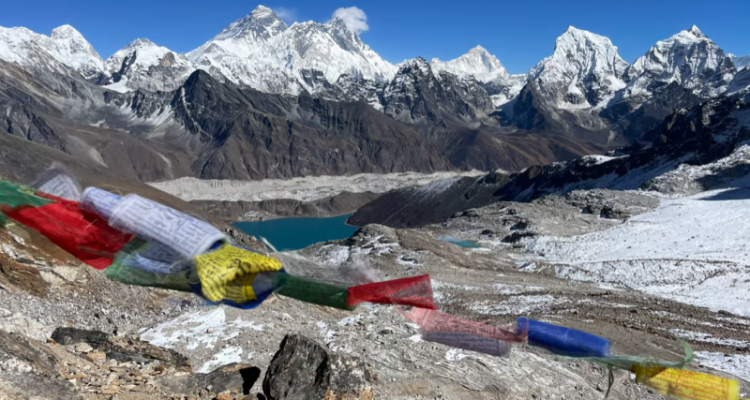
“Discover a world of pristine beauty and breathtaking vistas on the Gokyo Lakes & Renjo La Pass Trek – an adventure that will leave you spellbound and awestruck at every turn.”
The Gokyo Lakes & Renjola Pass Trek is a popular trekking and hiking adventure in the Everest region of Nepal. The trek lasts for 13 days and takes trekkers through some of the most stunning landscapes in the Himalayas. The highest elevation reached on the trek is 5,360 meters (17,585 feet) at the Renjola Pass. The trek is graded as strenuous due to the challenging terrain and altitude. Full board meals are provided during the trek, and accommodations include a 2-3-star hotel in Kathmandu and Normal lodges along the trekking route. The best seasons to embark on this trek are Autumn (September-October-November) and Spring (March-April-May). The transportation provided for the trek includes domestic flights and private vehicles, making it a convenient and hassle-free experience for trekkers.
Starting from Kathmandu, you’ll take a short flight to Lukla and begin your trek. From Lukla, you’ll make your way to Phakding, a small village located along the Dudh Kosi river. The terrain here is relatively easy, with few ascents or descents. You’ll spend the night in a teahouse, where you’ll get your first taste of the local hospitality.
From Phakding, you’ll continue your trek to Namche Bazaar, the gateway to the Everest region. Namche is a vibrant Sherpa town that offers stunning views of the surrounding mountains, including Everest itself. You’ll have some time to explore the town and acclimatize to the altitude before continuing on your trek.
From Namche, you’ll make your way to Thame, a picturesque village that offers breathtaking views of the surrounding peaks. The trek to Thame is relatively easy, with a gradual ascent through beautiful mountain scenery.
From Thame, you’ll continue on to Gokyo Valley, where you’ll encounter the first of the Gokyo Lakes. These turquoise-colored lakes are some of the most stunning natural wonders in the Himalayas, and they offer an incredible contrast to the snow-capped peaks that surround them. You’ll spend a couple of nights in Gokyo, allowing you to explore the valley and climb Gokyo Ri for panoramic views of the surrounding mountains.
After leaving Gokyo, you’ll make your way to Renjo La Pass, the highest point on the trek at 5,360 meters above sea level. The ascent to Renjo La Pass can be challenging, but the stunning views from the top make it all worthwhile. From the pass, you’ll have a panoramic view of the surrounding peaks, including Everest, Lhotse, and Cho Oyu.
Descending from Renjo La Pass, you’ll make your way back to Namche Bazaar, passing through beautiful mountain scenery along the way. The descent is relatively easy, with few challenging ascents or descents.
Overall, the Gokyo Lakes & Renjo La Pass is a nature lover’s paradise, offering stunning views of the Himalayas and an opportunity to explore some of the most beautiful natural wonders in the world. With Safe Holiday Adventure Pvt. Ltd, you can experience this incredible trek with a local and experienced team, ensuring that you have the adventure of a lifetime.
During the Gokyo Lakes & RenjoLa Pass trek, you will need to obtain a Sagarmatha National Park entry permit and a TIMS (Trekkers Information Management System) card. These permits are available at the permit check point in Monjo, which is the entry point to the national park. The Sagarmatha National Park is a UNESCO World Heritage Site and the permit fee contributes to the conservation of the park. The TIMS card provides information about trekkers to ensure their safety during the trek. The permit check point is located approximately 4-5 hours trekking distance from Lukla.
The Lukla flight is a short but thrilling mountain flight that takes you from Kathmandu to Lukla, the gateway to the Everest region. The flight offers breathtaking views of the Himalayas and the surrounding landscape. The flight duration is about 30-40 minutes and is operated by several domestic airlines. However, due to unpredictable weather conditions in the mountains, flights may be delayed or cancelled, so it is recommended to keep a few extra buffer days in your itinerary to account for any potential flight disruptions.
During the Gokyo Lakes & RenjoLa Pass trek, there are several comfortable lodges and tea houses along the trail that offer basic but cozy accommodation. These lodges are typically equipped with twin or double beds, warm blankets, and shared bathrooms.
As for food, most of the lodges offer a variety of local and international cuisine, including Nepali Dal Bhat (rice and lentils), soups, noodles, and some western dishes such as pizza and pasta. Breakfast usually consists of eggs, bread, pancakes, and porridge, while lunch and dinner are served as set meals or a la carte.
It is recommended to drink plenty of water during the trek and to avoid tap water, instead opting for boiled or purified water. Snacks such as energy bars, chocolates, and nuts can also be purchased at the lodges along the trail.
Gokyo valley, Lakes and Glacier
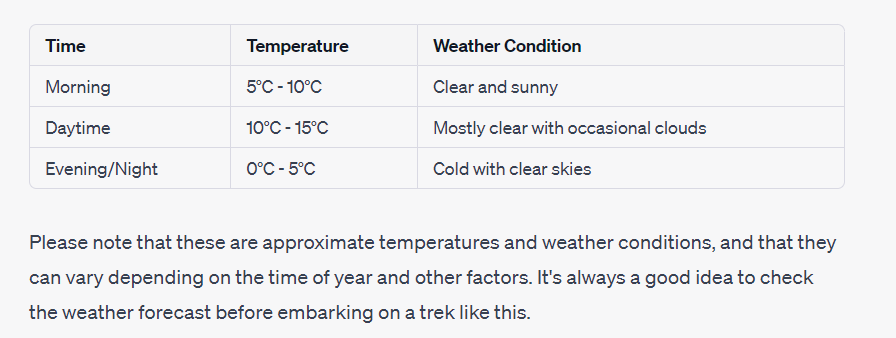
Upon your arrival in Kathmandu, Safe Holiday Adventure’s team will be at the airport to greet you and take you to your hotel. The airport is just a 30-minute drive from the city center, and our representative will be holding a white paper with your name on it for easy identification.
After reaching the hotel, we understand that you may be tired from your journey, so we will give you some time to rest and freshen up before we proceed with discussing the details of your trek, including the preparation needed and any outstanding payments.
Your overnight stay in the hotel will give you the chance to relax and settle in before embarking on your adventure in the Himalayas.
Day 2: Fly from Kathmandu to Lukla & Trek to Phakding (2610m)
Flying from Kathmandu to Lukla is an exciting and scenic experience that marks the start of your trek to the Everest region. Here’s what you can expect when you fly from Kathmandu to Lukla and trek to Phakding:
You’ll start your day early in the morning, and Safe Holiday Adventure will arrange for your transportation to the domestic terminal of Kathmandu’s Tribhuvan International Airport. After completing the necessary paperwork, you’ll board a small aircraft that will take you on a 30-35 minute flight to Lukla.
As the plane takes off from Kathmandu, you’ll get a stunning view of the city and the surrounding hills. The flight itself is an adventure, as the small plane navigates through the narrow valleys of the Himalayas. Finally, you’ll land at the Tenzing-Hillary Airport in Lukla, which is located at an altitude of 2,860 meters.
From Lukla, you’ll begin your trek towards Phakding, a small village located at an altitude of 2,610 meters. The trek is relatively easy, with few steep ascents or descents, and it takes around 3-4 hours to complete. You’ll follow a well-marked trail that winds through beautiful mountain scenery, passing through small villages and past terraced fields.
As you trek towards Phakding, you’ll cross several suspension bridges that span the Dudh Kosi river. These bridges are a unique feature of the Everest region, and they offer stunning views of the river and the surrounding mountains. You’ll also encounter many trekkers and porters who are making their way towards Everest Base Camp.
Finally, you’ll reach Phakding, where you’ll spend the night in a teahouse. Phakding is a small village with a few guesthouses and shops, and it offers a peaceful setting to relax and prepare for the next day’s trek towards Namche Bazaar.
Day 3: Trek to Namche Bazaar (3445m).
On the third day of your trek, you will continue on the trail from Phakding towards Namche Bazaar. This is a more challenging day as you will ascend to a higher altitude, with a total trekking time of around 5-6 hours. You’ll cross several suspension bridges over the Dudh Kosi river and pass through small villages such as Monjo and Jorsalle. As you get closer to Namche Bazaar, you’ll start to see the first glimpses of Mt. Everest and the surrounding peaks. Finally, you’ll reach Namche Bazaar, a bustling town with many shops, restaurants, and guesthouses. You’ll spend the night here to acclimatize to the altitude.
Day 4: Acclimatization day at Namche Bazaar
After reaching Namche Bazaar on day three, you’ll spend an extra day here for acclimatization. This is an important step in the trekking process, as it helps your body adjust to the higher altitude and reduces the risk of altitude sickness.
During this acclimatization day, you can explore the town and surrounding areas. Namche Bazaar is a bustling town with many shops, restaurants, and cafes, so you can spend some time browsing the local markets and sampling the local food. You can also take a short hike to the Everest View Hotel, which offers stunning views of Mount Everest and other surrounding peaks. This extra day in Namche Bazaar will help you prepare for the rest of the trek with renewed energy and strength.
Day 5: Trek to Dole (4150m) from Namche Bazar
On day four of the trek, you’ll leave Namche Bazaar and continue towards Dole. This is a challenging day as you’ll be ascending to a higher altitude, with a total trekking time of around 6-7 hours.
The trail passes through Kynjuma, a small settlement with a few tea houses, and then Sanasa, which is a junction point for trekkers heading towards Gokyo or Everest Base Camp. You’ll continue on to Mong Danda, which offers stunning panoramic views of the surrounding mountains.
Finally, you’ll reach Dole, a small village situated on a ridge. Here you’ll find several tea houses and lodges for accommodation. Dole offers beautiful views of the surrounding mountains and is a great place to rest and acclimatize to the higher altitude.
Day 6: Trek to Machhermo (4470m) from Dole
On day five of the trek, you’ll leave Dole and continue towards Machhermo. This is a challenging day as you’ll be ascending to an even higher altitude, with a total trekking time of around 4-5 hours.
The trail passes through lush forests of rhododendron and pine, with occasional views of the surrounding mountains. You’ll pass through small settlements such as Lhabarma and Luza before reaching Machhermo.
Machhermo is a small village situated in a valley surrounded by mountains. It’s known for its beautiful scenery and stunning views of the nearby peaks. You’ll find several tea houses and lodges for accommodation here, and it’s a great place to rest and acclimatize to the higher altitude before continuing on to Gokyo.
Day 7: Trek to Gokyo (4750m), after Lunch hike to 5th lake and back to Gokyo Hotel.
On day six of the trek, you’ll leave Machhermo and continue towards Gokyo. This is a challenging day as you’ll be ascending to an even higher altitude, with a total trekking time of around 4-5 hours.
The trail passes through stunning scenery, including glacial rivers, rocky terrain, and beautiful mountain views. You’ll pass through the small settlement of Phangga before reaching Gokyo.
After lunch, you’ll have the option to take a hike to the Fifth Lake. This is a beautiful glacial lake that offers stunning views of the surrounding mountains. The hike will take around 2-3 hours round trip, and you’ll return to Gokyo in the evening.
Gokyo is a small village situated on the edge of a glacial lake, and it offers stunning views of the surrounding peaks. You’ll find several tea houses and lodges for accommodation here, and it’s a great place to rest and acclimatize to the higher altitude before continuing on to the Renjo La Pass.
DAY 8: Early morning hike to Gokyo Ri 5360m for sunrise trek to Lungden (4350m).
On day seven of the trek, you’ll wake up early in the morning for a challenging hike to Gokyo Ri. The hike will take around 2-3 hours and will be steep and strenuous, but the stunning views of the sunrise over the surrounding peaks will make it worth it. From the top of Gokyo Ri, you’ll have panoramic views of Mount Everest, Cho Oyu, Lhotse, Makalu, and many other peaks.
After descending back to Gokyo, you’ll continue your trek towards Lungden. The trail will take you through beautiful mountain scenery, passing through small settlements such as Thangnak and Dragnag before reaching Lungden. This is a small village situated in a remote valley and offers stunning views of the surrounding mountains. You’ll find several tea houses and lodges for accommodation here, and it’s a great place to rest and acclimatize to the higher altitude before continuing on to the Renjo La Pass. The trekking time for this day is around 7-8 hours.
Day 9: Trek down to Thame (3850m) From Lungden and visit Thame Monastery
On day eight of the trek, you’ll begin your descent towards Thame, a small village located at an altitude of 3850m. The trek will take you through stunning mountain scenery, passing through small settlements and traditional Sherpa villages along the way. You’ll have the opportunity to take in the beautiful landscape and enjoy the fresh mountain air as you make your way towards Thame.
Once you reach Thame, you’ll have the chance to visit the Thame Monastery. This is a historic Buddhist monastery that dates back over 500 years and is considered one of the most important monasteries in the region. It’s a great opportunity to learn about the local culture and history and to immerse yourself in the spiritual traditions of the Sherpa people. Overall, this day will offer a chance to experience the rich culture and natural beauty of the region.
Day 10: Trek down to Namche (3440m) from Thame through Thamo village
On day nine of the trek, you’ll continue your descent towards Namche Bazaar, a popular town and trekking hub located at an altitude of 3440m. The trek will take you through the beautiful Thamo village, a traditional Sherpa settlement that’s situated along the banks of the Bhote Koshi River. You’ll have the chance to see how the local people live and work in this remote mountain region.
As you make your way towards Namche Bazaar, you’ll pass through beautiful mountain scenery and may even catch glimpses of some of the region’s famous peaks. Once you reach Namche Bazaar, you’ll have the opportunity to rest and relax in this bustling mountain town. You can explore the local markets, visit the Sherpa Museum, or simply enjoy the beautiful mountain views. Overall, this day will offer a chance to experience the rich culture and natural beauty of the region as you make your way back towards civilization.
Day 11: Trek down to Namche (3440m) from Thame(3850m)
Trekking down from Thame (3850m) to Namche Bazaar (3440m) is a delightful experience in the Everest region of Nepal. The trail offers stunning views of the snow-capped peaks and lush green hillsides.
The trail initially takes you through a gradual descent, with occasional uphill sections, and passes through traditional Sherpa villages. You will cross several suspension bridges over the Dudh Koshi river and pass through dense forests of rhododendron and pine trees.
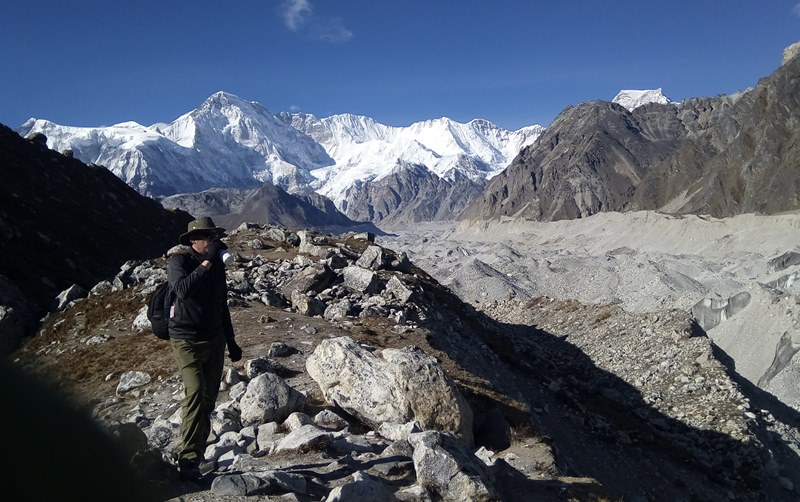
Mr. Martin from England enjoying the View of Nogjompa Glacier at Gokyo valley.
Along the way, you will encounter several Mani walls, chortens, and prayer flags that are unique to the culture of the region. You will also get a glimpse of the local lifestyle and culture of the Sherpa people.
After a few hours of walking, you will reach the vibrant town of Namche Bazaar, which is a popular hub for trekkers in the Everest region. Namche Bazaar offers numerous restaurants, cafes, and shops where you can relax, rejuvenate and purchase souvenirs.
Day 12: Trek down to Lukla from Namche Bazaar(
Trekking from Namche Bazaar to Lukla is a beautiful and rewarding journey in the Everest region of Nepal. The trek takes you through picturesque mountain villages, dense forests, and breathtaking mountain landscapes.
From Namche Bazaar, you will descend towards the Dudh Koshi River and pass through several small settlements such as Phakding and Monjo. Along the way, you will cross suspension bridges that span the river and offer stunning views of the surrounding mountains.
As you trek towards Lukla, you will pass through a mix of forested areas and open plains, with occasional glimpses of snow-capped peaks. The trail is well-marked and relatively easy, with some gentle uphill climbs and occasional steep sections.
Lukla is the gateway to the Everest region and serves as the starting and ending point for most treks in the area. The town is situated at an elevation of around 2,860 meters and is home to a small airport that connects the region with Kathmandu.
Day 13: Fly back to Kathmandu & Explore Kathmandu
Today, you will take a flight from Lukla to Kathmandu. Once you arrive in Kathmandu, you will have the opportunity to explore the city and visit some of its famous cultural and historical sites, such as the Swayambhunath Stupa, Pashupatinath Temple, and Boudhanath Stupa.
Day 14: Final transfer to airport for your flight back home
On your final day in Nepal, our team will ensure that your departure goes smoothly. Our airport representative will pick you up from your hotel and transport you to the airport with ample time for you to check-in and go through security. It is recommended to arrive at the airport at least 2.5 to 3 hours prior to your flight to avoid any potential delays or complications.
We hope that you had an incredible trekking experience in Nepal and that it exceeded your expectations. Our team takes great pride in providing safe and enjoyable adventures for our clients, and we are delighted to hear that you had a great time with us.
As you depart, we invite you to reflect on the unique cultural experiences and breathtaking natural beauty that you encountered during your journey in Nepal. We sincerely hope that you will consider coming back to explore more of what Nepal has to offer in terms of adventure and cultural experiences.
We wish you a safe and comfortable journey back home and hope that the memories of your time in Nepal will stay with you forever. Thank you for choosing our team for your trekking adventure, and we hope to see you again soon!
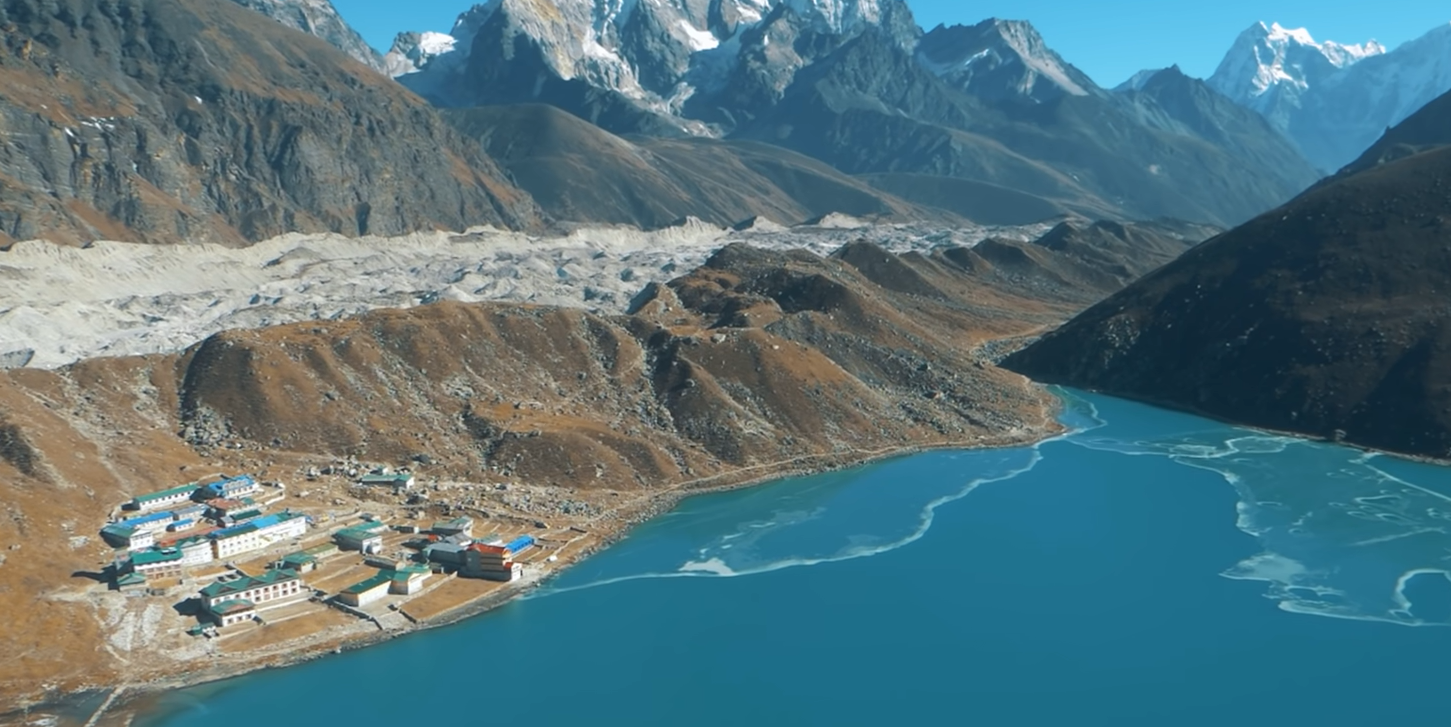
The best time to undertake the Gokyo and Renjo La Pass trek in the Everest region is during the pre-monsoon (spring) and post-monsoon (autumn) seasons. Here’s what you can expect in terms of weather during these periods:
Spring Season (March to May):
Spring is considered one of the best times for trekking in the Everest region. The weather is generally stable, and the temperatures start to warm up. However, mornings and evenings can still be cold, especially at higher altitudes. In the lower regions, daytime temperatures can range from 10 to 15°C (50 to 59°F). As you ascend, temperatures drop, and at higher altitudes, they can range from -5 to 5°C (23 to 41°F). It’s essential to be prepared for colder temperatures and changing weather conditions, as occasional rain or snowfall can occur.
Autumn Season (September to November):
Autumn is another popular season for trekking in the Everest region. The weather tends to be stable and clear, offering excellent visibility for enjoying the mountain views. During this time, the temperatures are generally cooler than in spring but more pleasant than other seasons. In the lower regions, daytime temperatures can range from 10 to 20°C (50 to 68°F). As you ascend, temperatures decrease, and at higher altitudes, they can range from -5 to 10°C (23 to 50°F). Autumn is relatively dry, but occasional light showers or snowfall may occur.
It’s important to note that weather conditions can vary, and it’s always advisable to check the latest weather forecasts before your trek. Additionally, the high altitude and mountainous terrain bring about rapid weather changes, so it’s crucial to be prepared with appropriate clothing and equipment for all weather scenarios.
Here’s a table listing some of the prominent mountains in the Everest region, including their names and altitudes:
Mountain Name Altitude (in meters)
⇒Cho Oyu 8,201, ⇒Makalu 8,481
⇒Lhotse 8,516 ⇒Everest 8,848
⇒Pumori 7,161 ⇒Changaste 7,583
⇒Ama Dablam 6,812 ⇒Cholatse 6,440
⇒Tawache 6,542 ⇒Thamserku 6,623
⇒Kangtega 6,782 ⇒Nuptse 7,861
⇒Kongde Ri 6,187 ⇒ Khumbila 5,761
⇒Island Peak 6,189 ⇒Lobuche East 6,119
⇒Lobuche West 6,145 ⇒Pokalde 5,806
⇒Mera Peak 6,476 ⇒Kyajo Ri 6,186
⇒Gokyo Ri 5,357 ⇒Renjo La Pass 5,360
⇒Kongma La Pass 5,535 ⇒Cho La Pass 5,420
⇒Everest Base Camp 5,364
Please note that the list includes only a selection of the prominent mountains in the Everest region, and there are many more peaks and passes in the area. Altitude measurements may vary slightly depending on different sources.
When embarking on the Gokyo and Renjo La Pass trek in the Everest region, it’s crucial to have the right gear and equipment to ensure your safety, comfort, and enjoyment throughout the journey. Here’s a list of recommended gear and equipment for the trek:
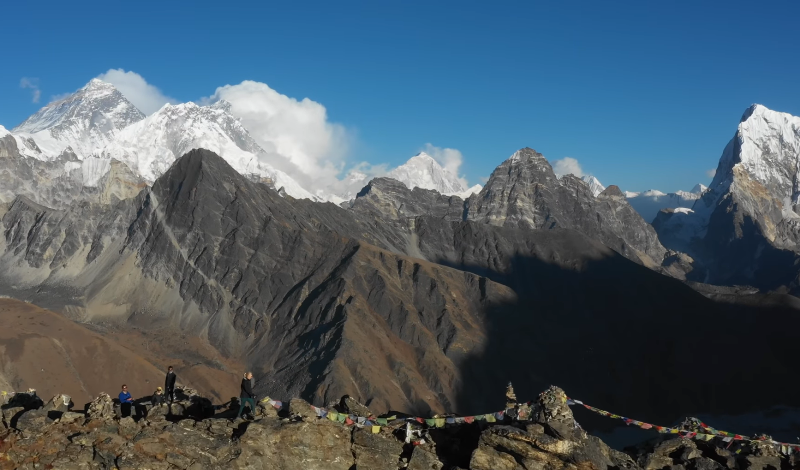
Remember to pack light and prioritize essential items. It’s also advisable to check the specific gear requirements with your trekking agency or guide, as they may have additional recommendations based on the season and your specific itinerary.
The Gokyo and Renjo La Pass trek offers not only breathtaking natural beauty but also rich cultural experiences and sights along the way. You’ll have the opportunity to visit traditional Sherpa villages, where you can immerse yourself in the unique Sherpa culture and witness their traditional lifestyle. You’ll encounter Buddhist monasteries and stupas adorned with prayer flags, such as the famous Tengboche Monastery, providing insight into the spiritual traditions of the region. The trek also offers stunning views of Himalayan peaks, including Everest, Cho Oyu, and Makalu, as well as serene turquoise lakes like Gokyo Lake. Overall, the trek offers a harmonious blend of natural wonders and cultural treasures.
When embarking on the Gokyo and Renjo La Pass trek, it’s essential to prioritize safety. Here are some guidelines and tips to ensure a safe and enjoyable trek:
Remember, safety should be your top priority during the trek. By being well-prepared, informed, and cautious, you can have a memorable and secure experience in the Gokyo and Renjo La Pass trek.
During the Gokyo and Renjo La Pass trek, there are several accommodation options available along the route. Here are the main types of accommodation you can expect:
Tea houses or lodges are the most common and popular accommodation option along the trek. These are small guesthouses or lodges run by local Sherpa families. Tea houses provide basic facilities such as private or shared rooms, communal dining areas, and shared bathrooms (often with squat toilets). Bedding, blankets, and pillows are usually provided, but it’s advisable to bring your own sleeping bag for added warmth and comfort. Tea houses also offer meals, including breakfast, lunch, and dinner, with a variety of local and international food options.
Camping is an alternative option for those who prefer a more immersive outdoor experience. While tea houses are widely available, some trekkers may choose to camp in designated camping areas along the route. Camping requires carrying your own camping gear, including tents, sleeping bags, cooking equipment, and food supplies. It’s essential to be adequately equipped and experienced in camping in mountainous terrain.
It’s important to note that during peak trekking seasons, tea houses can get crowded, especially at popular stops. It’s advisable to start early and try to secure a room in advance, especially in high-demand areas. In more remote or less frequented sections of the trek, accommodation options may be more limited, and it’s advisable to check with local guides or agencies for the latest information on availability.
Regardless of the accommodation type you choose, it’s recommended to maintain basic hygiene practices, bring a sleeping bag liner for added cleanliness, and be respectful of local customs and traditions.
Hiring a guide or porter is a common practice for trekkers in the Gokyo and Renjo La Pass trek, especially if you are new to trekking or unfamiliar with the area. Here are some steps you can follow to hire a guide or porter:
There are many trekking agencies that offer guide and porter services in the Everest region. Look for a reputable agency with experienced guides and a good track record of customer satisfaction. Read reviews and testimonials online, and ask for recommendations from other trekkers who have done the Gokyo and Renjo La Pass trek.
Once you have selected a trekking agency, contact them and discuss your requirements for a guide or porter. Be clear about your trekking dates, group size, budget, and any other specific needs or preferences you may have.
Before finalizing the hiring process, it’s important to meet the guide or porter in person. This will give you an opportunity to assess their communication skills, experience, and fitness level. Ask about their previous trekking experience, certifications, and familiarity with the Gokyo and Renjo La Pass trek.
Once you have selected a guide or porter, negotiate the terms and conditions of the hiring agreement. This should include their daily rate, food, accommodation, and any other expenses they may incur during the trek. Make sure you have a clear understanding of their responsibilities, such as carrying your luggage, guiding you along the trail, and arranging accommodation and meals.
Before starting the trek, it’s essential to sign a contract with the guide or porter, outlining the terms and conditions of the agreement. Make sure the contract includes details such as the trekking route, the duration of the trek, the daily rate, and any other agreed-upon terms. It’s also a good idea to include a provision for unforeseen circumstances, such as illness or bad weather.
By following these steps, you can hire a reliable and experienced guide or porter for your Gokyo and Renjo La Pass trek, ensuring a safe and enjoyable experience on the trail.
The Gokyo Trek and Renjo La Pass Trek are both located in the Everest region of Nepal and are often combined into a single trek. Here are the approximate distances for each section:
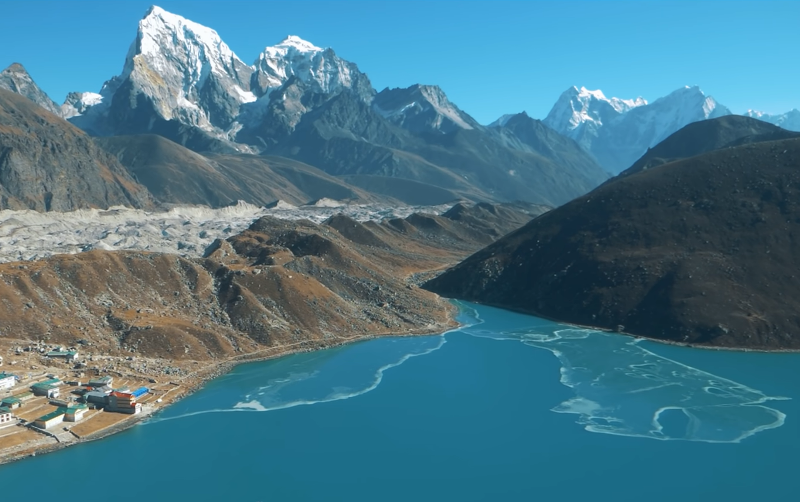
Please note that these distances are approximate and can vary based on the specific route taken, side trips, and variations in individual trekking itineraries. It’s always recommended to consult with a local trekking agency or experienced guide for the most up-to-date and accurate information regarding distances and routes.
Solo trekking allows for complete independence and the opportunity for self-discovery. It also allows for a flexible schedule and the ability to go at your own pace. However, it can also be dangerous and lonely. It is important to have proper communication devices and safety precautions in place.
For solo travelers, it is recommended to have a satellite phone or personal locator beacon for emergency situations. It is also important to inform someone of your plans and expected return date.
Joining a group trek allows for a sense of community and shared experience. It can also be more cost-effective and provide access to expert guides. However, it may also restrict flexibility and personal preferences.
Group trekking options range from budget-friendly tours to luxury expeditions. It is important to choose a group that aligns with your preferences and expectations.
In order to avoid air traffic congestion at Kathmandu Airport and to ensure smooth flight operations, flights to Lukla will be operated from Ramechhap (Manthali) Airport during the Spring season (March 16 to May 31, 2023) and Autumn season (September 1 to November 30, 2023).
Please note that due to this change, you will need to add one extra buffer day to manage all transfers to and from Manthali Airport. Alternatively, we can adjust the program on Day 2 to include a guided sightseeing tour in Kathmandu in the morning, followed by a transfer to Mulkot in the afternoon. We recommend driving to Mulkot, which is about 3 hours away from Kathmandu, and spending a night at a hotel there. The next morning, it will only take an hour of driving to reach Manthali Airport to catch your flight to Lukla.
On your return, you can fly from Lukla to Manthali Airport and then drive back to Kathmandu on the same day.
Please be assured that we will make all necessary arrangements to ensure a smooth and hassle-free transfer between Kathmandu and Manthali Airport. If you have any questions or concerns, please do not hesitate to contact us.